[ad_1]
Interviews by Akanksha Pandey. Photographs by Asad Sheikh.
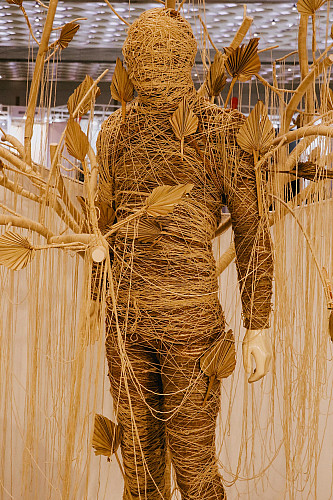
John Roberts, The Woolmark Company
Tell us about The Woolmark Company’s recent developments with sustainable wool.
At The Woolmark Company, we are constantly working on innovations that bring positive change in the fashion industry. The natural colouration technology is one of the process innovations, where we worked with our partner BioDye from Samantwadi. The raw materials, like plant leaves, flowers, stems, etc., are all grown locally by BioDye. Focusing on sustainable dyeing processes with minimal impact, BioDye seeds scientific breakthroughs using the best of nature to create 100-per-cent natural dyes and biodegradable ingredients through eco-friendly processes. This innovation helps in making fashion more sustainable as designers can use 100-per-cent natural fibres like wool and process it in vibrant natural colours to get desired results.
The other innovation is in the shoes category, where The Woolmark Company has used advancements in knitting technology to facilitate the use of wool in footwear. Combining wool with different yarns in a shoe upper draws on wool’s natural properties to promote dryness, breathability, freshness (anti-odour), comfort and warmth. With fully fashioned knitwear uppers, waste is reduced by directly mounting the shaped piece onto the sole of the shoe. Filament-wrapped wool yarns add strength and resistance to abrasion, extending the wear of the shoe.
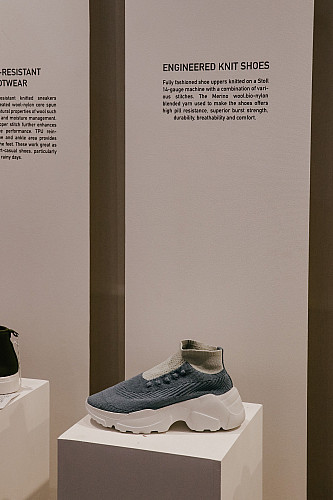
Are you collaborating with any Indian designers?
We constantly collaborate with designers to educate and inspire as they are an integral part of our supply chain in our farm-to-fashion journey. The Wool Lab, which is a wool trend forecasting and sourcing tool from The Woolmark Company, is a valued resource for designers. In the past we have collaborated with Péro, Rajesh Pratap Singh, Eka, Dhruv Kapoor, to name a few. Pre-COVID-19, Péro and The Woolmark Company did a show at Lakmé Fashion Week with a handwoven merino wool collection with Bhuttico [a wool weavers’ cooperative society].
What does sustainable design mean to you?
Sustainable design means following these three steps. First, designing for the long life of the garment with fibres, yarns, fabrics and constructs that are durable in garments that don’t go out of fashion (choose slow fashion). Secondly, educating consumers on best-practice care, repair and reuse of garments. Finally, designing for the afterlife of the garment by choosing natural fibres that are biodegradable and designing for disassembly so that components of a garment can be reused and recycled. The Woolmark Company has developed a toolkit for designers to help them implement circular design in their workflow.
Kirti Poonia, Relove
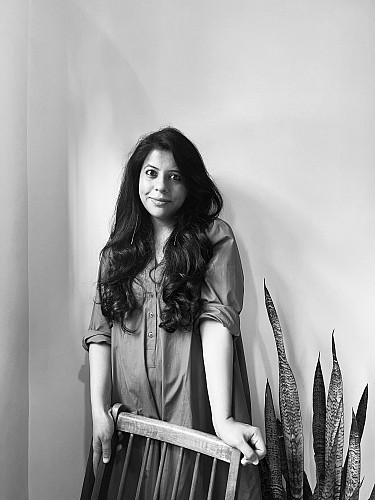
What is the process through which you are enabling sustainability in the industry?
Our approach is to build circular tech that can help brands become more sustainable. We are doing this in three ways. Relove, a brand-owned resale programme, which helps brands to increase the lifespan of their products and acquire new customers. Rescue, a digital factory outlet, which helps brands liquidate slightly defective items. And take-back models, where brands take back their items in exchange for store credit. The brands then upcycle these items to ensure they don’t make their way to the landfill.
How did you arrive at this idea?
Sustainability can become easy to imbibe into businesses through technology. Brands today want to do the right thing, but are often very overwhelmed while trying to achieve their sustainability goals. So, we were looking for a tech-first solution that could be smoothly executed. Since I have worked in sustainable fashion, I understood the problems of customers — being able to wear only 20 per cent of their wardrobes 80 per cent of their time. Co-founder Prateek Gupte worked in technology that was making the lives of brands and consumers easier. Together, we built this solution to make fashion more circular.
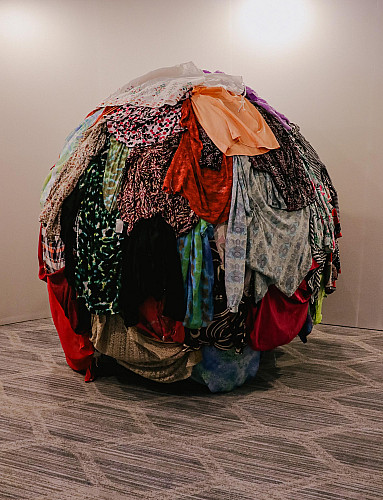
What does sustainable design mean to you?
It’s the future — a future for businesses and the planet is only possible if we learn to co-exist. Sustainable design is the only way for all of us to survive.
Himansha Singh, Craste
What is the process through which you are enabling sustainability in the industry?
Our vision is to provide an alternative to timber (to save forests), to offer a solution to crop burning, and to put waste to work. At Craste, we innovate to utilise waste to produce value-added products. We have pioneered the novel technique, FuMa Solv, which converts any type of crop waste into food-grade pulp (patent pending) and can be transformed into paper for packaging and other applications. We have also extended our R&D to use textile waste, sanitary pads waste and any other plant-based waste. Our pulping technology is based on circular economy principles and adheres strictly to green manufacturing, further lowering carbon footprint at the manufacturing level.
We have also innovated with developing India’s first tree-free E0 engineered boards for furniture and construction applications. Usually, MDF and particle boards contain high amounts of formaldehyde, a known carcinogen. Our boards are E0, which makes them formaldehyde-free (CARB-certified) and therefore, a much healthier alternative. We also offer circular packaging to the industry, where their waste can wrap their products.
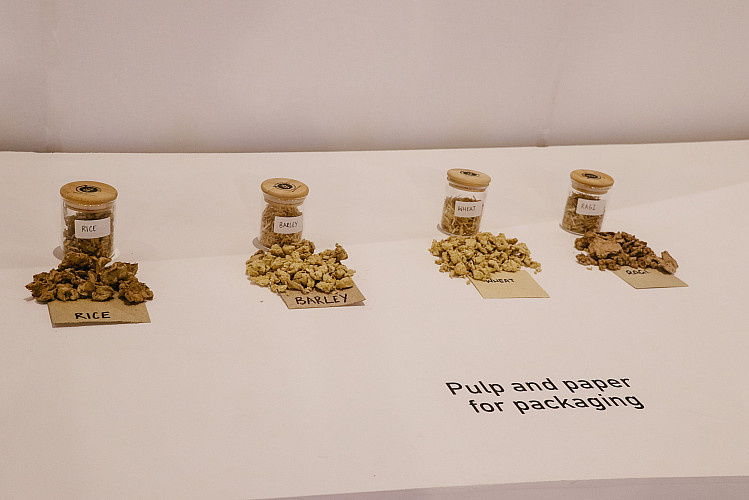
How did you arrive at this idea?
My brother Shubham Singh (co-founder and CEO) was a student at Imperial College London, where he was working on carbon-capturing technology as an advanced chemical engineering student. At the time, news of crop burning in India and the pollution it caused in the capital was all over BBC and The Guardian. Shubham, who was already working on projects related to reducing the burden of greenhouse gasses on the environment, decided to work on crop stubble to focus on finding a solution for crop burning in our country. I was a PhD student and a research fellow at the University of Cambridge and I was working on drug development and microbiology. I joined Shubham when he set up his laboratory in Venture Center, Pune and from there Craste was born to bring scientific innovation into the conventional sectors of paper and board-making.
What does sustainability mean to you?
Sustainability should be part of everyone’s life and become the norm. It should be as much of a priority as drinking clean water, and people should autonomously opt for it without compromising or thinking of it as an option.
Vishal Tolambia, Humanity Centred Designs
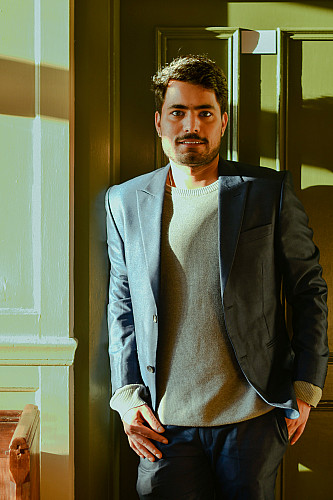
What is the process through which you are enabling sustainability in the industry?
India is the second-largest apparel and textile manufacturing destination worldwide. Ninety per cent of the production takes place at micro and small-scale factories, which currently operate in an unorganised and decentralised way. One challenge they face is accumulating pre-consumer textile waste at the manufacturing stage; over 1,600 thousand tonnes of textile waste is generated even before a garment reaches a consumer, and directly ends up in landfills. Humanity Centred Designs has designed and developed an innovative local circular recycling technology that utilises the pre-consumer textile waste from these marginalised MSEs (Micro and Small Enterprises) and converts it into a recycled range of 100-per-cent low-impact luxury textile materials, which we call HCD-Tex. A highly durable, flexible, and strong range of recycled materials that can be utilised by any fashion brand for sustainable product development. Developed at London College of Fashion during my master’s studies, Humanity Centred Designs is working alongside London College of Fashion researchers to transform their low-impact materials into net zero-impact materials in the future.
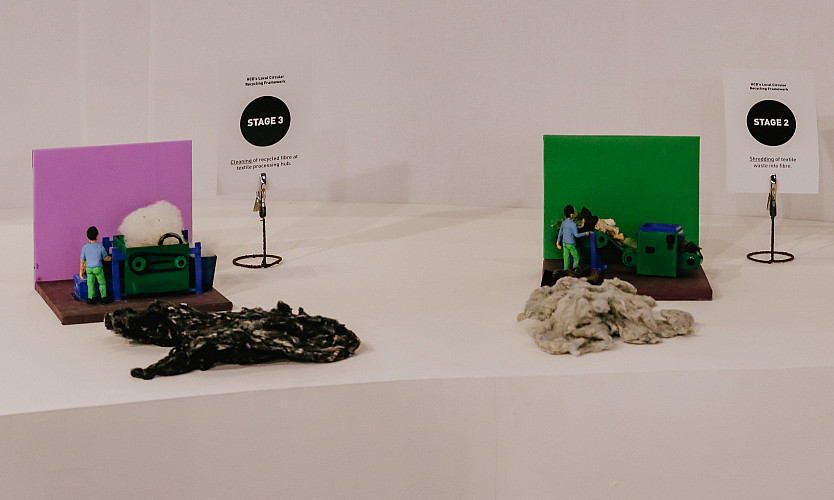
What does sustainability mean to you?
For us, sustainability means enabling sustainable operations. To fulfil this commitment, we provide training, support, guidance, and workshops to the partner MSEs for advancement towards a circular economy. Sustainability also means that we care for the planet and protect it, by making sure that 80 per cent of our production is through renewable energy sources, responsible consumption of water, and minimised resource utilisation. We’re on a journey to make all fashion MSEs in India circular.
Priya Krishnamoorthy, 200 Million Artisans
What is the medium through which you are enabling sustainability in the industry?
200 Million Artisans (200M) is an impact-first ecosystem enabler reimagining the potential of handmade in India. As a social enterprise dedicated to accelerating growth for craft-led Micro, Small and Medium Enterprises (brands, impact enterprises and producers), we bridge gaps in information, innovation and investment in India’s artisan economy with a clear focus on addressing the livelihoods, gender inequality and climate change nexus. By leveraging new media and creative storytelling, we also work towards making information accessible to the larger public, and getting them interested and invested in the long-term sustainability of the artisan sector and the communities that make up this rich, vibrant, creative universe of handmade.
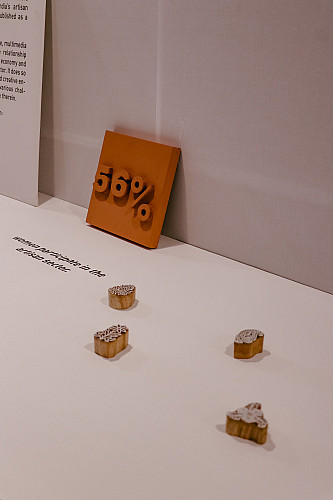
How did you arrive at this idea?
200 Million Artisans started out as a COVID-19 platform to help connect the Indian diaspora who were keen to support artisan communities and enterprises in India but didn’t know how. 200M served as a platform to reduce some of the many information gaps in the sector. We did this by listing resources, creating visibility for fundraisers, and by championing enterprises employing and supporting artisan communities. India’s artisan sector is the second-largest employer after agriculture but simply does not attract the same level of investment or innovation. Our focus on research is to bridge the information asymmetry and leverage data to communicate its sheer size and potential. We believe that the artisan has the potential to usher in a more equitable, sustainable and green economy. It’s time investors, corporates, and policymakers view this in a new light and direct much-needed capital and resources to plug in gaps and build infrastructure.
What does sustainability mean to you?
More than 56 per cent of artisans in India are women, and this is because the artisan sector is designed to offer meaningful employment opportunities at the doorsteps of women in rural India. For us, sustainability means empowering our many creative and social enterprises working with handmade in India to address the ever-present challenges of livelihoods, climate change and gender equality by helping them grow and scale sustainably. Not to mention, handmade inherently champions small-batch production, eco-friendly or sustainably sourced raw materials, thoughtful processes and traditional skills that have been passed down the generations.
Ankit Agarwal, Phool
What is the process through which you are enabling sustainability in the industry?
Fleather is a biomaterial. It is a sustainable, animal-free and non-plastic alternative to conventional animal leather. The process of manufacturing Fleather is based on the principles of biomimicry — a naturally occurring biological process replicated in the lab. We utilise waste flowers, a source of pollution, as our raw material. These flowers serve as a source of nutrition to a particular microbial species, which grow over them. As an end result of this growth process, sheets are formed, which are further treated with certain plant extracts and vegetable dyes. The manufacturing of Fleather is carbon negative and does not incorporate any harmful or hazardous component whereas its conventional competitor, the animal leather, undergoes tanning as a part of its manufacturing process and this tanning involves usage of a lot of toxic chemicals, heavy metals, etc. that wash away with the tannery effluents and mix in river water. Fleather is a step forward in the direction to stop such environmentally degrading practices and establish sustainability.
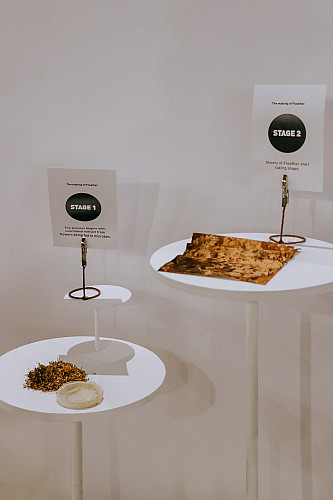
How did you arrive at this idea?
It was serendipity. Initially, we identified temple flower waste as a source of pollution and started making incense sticks and cones out of it. In the beginning, production capacity was small and a lot of collected flowers remained unutilised. One day, we observed a thick, white, fluffy lump over an unused flower pile. We were intrigued. A deeper dive into it allowed us to understand the microbial growth phenomenon. We also noticed that the velvety touch of this fluffy layer was familiar. The texture resembled that of leather. We were curious to replicate the same in the lab and experiments in that direction led us to the invention of Fleather.
What does sustainability mean to you?
A circular economy model with triple bottom-line benefits along social, economic and environmental lines is sustainability for us.
[ad_2]
Source link
Jarastyle – #EcoInnovators #Present #Takes #Business #Fashion #Sustainable
Courtesy : https://www.vervemagazine.in/fashion-and-beauty/five-eco-innovators-present-their-takes-on-how-to-make-the-business-of-fashion-more-sustainable

